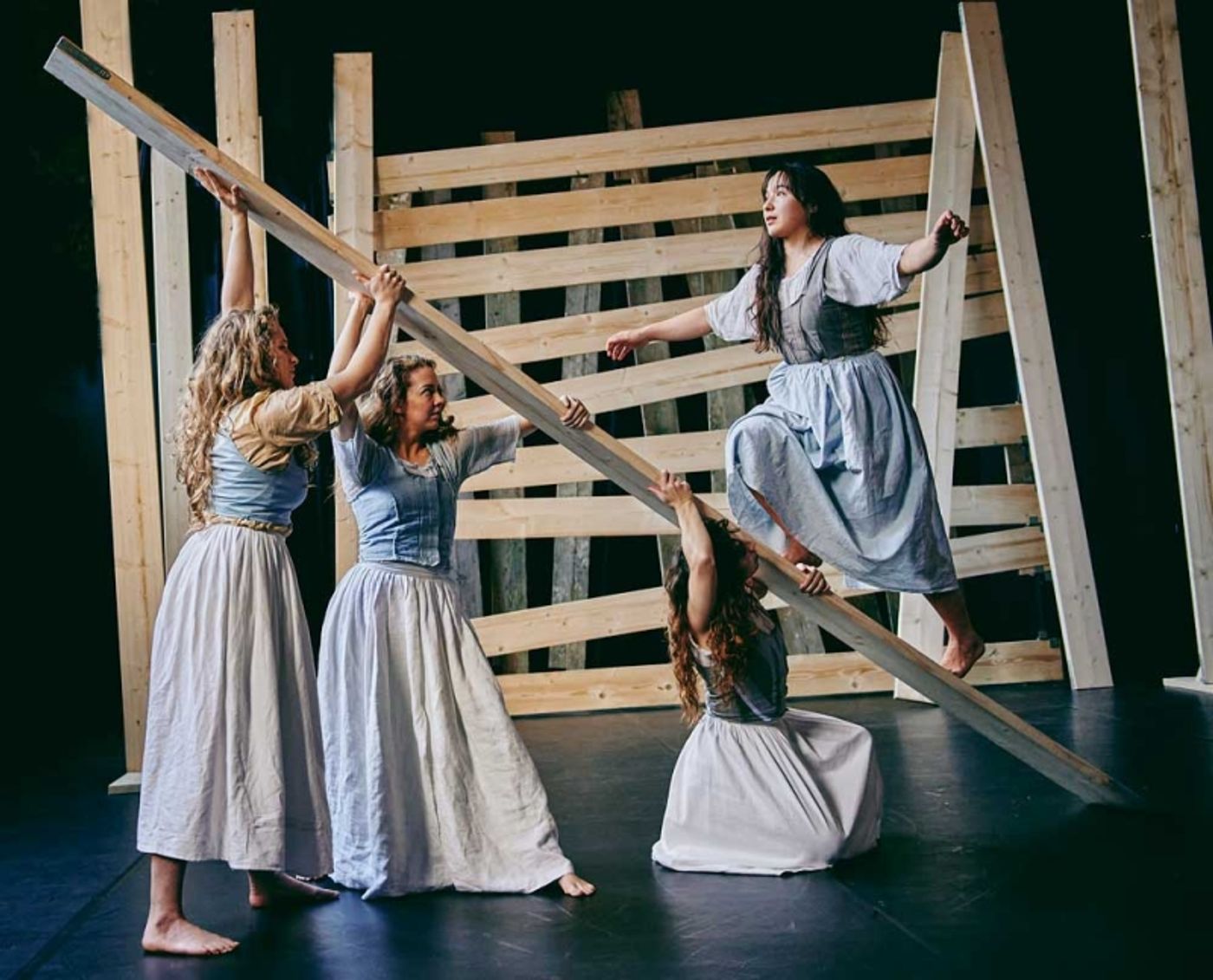Review: TESS, Peacock Theatre
Has Ockham's Razor run away from the circus?

![]() Filled with a couple of operas’ worth of tragedy, Thomas Hardy’s Tess of the D’Urbervilles is not the likeliest source of inspiration for a dramatic circus show but Ockham's Razor are here to prove us wrong.
Filled with a couple of operas’ worth of tragedy, Thomas Hardy’s Tess of the D’Urbervilles is not the likeliest source of inspiration for a dramatic circus show but Ockham's Razor are here to prove us wrong.
The company have a long association with the MimeLondon festival having premiered their first full evening programme in 2007 at the London International Mime Festival (as it was then known). They are not unique in folding big top arts into theatrical productions but their long track record promises much for each new show they create.
Produced by Turtle Key Arts, this Tess is undoubtedly an ambitious work going by its famously dark subject matter and a meaty running time of over two hours plus interval. Its source material is a black landscape with occasional moments of levity and the directors have done well to dig deep into Hardy’s world and translate it faithfully to the stage in a form recognisable by fans of the book.

A neat twist from directors Alex Harvey and Charlotte Mooney is having a pair of Tesses: Macadie Amoroso delivers Hardy’s original text in a less-than-convincing West Country accent while Lila Naruse takes centre stage, acting and dancing her way through one misery after another. The use of audible narration arguably goes against the core tenet of MimeLondon (the clue’s in the name) but this dual portrayal of Tess’s; journey adds real substance to what we are watching; rather than relying purely on interpreting Naruse’s movements, the emotive and sometimes brutal text we hear from Amoroso powerfully pulls us into the action.
Nathan Johnston’s choreography makes superb use of the actors’ physical skills, embellishing fluid dance movements with flips, jumps and human totems. A trio of smitten milkmaids (Leah Wellings, Lauren Jamieson and Victoria Skillen) dangle from wooden slats while ogling the handsome farmer Angel Clare (Nat Whittingham) while Joshua Frazer cuts a sinister figure as the rapist Alec d’Urberville.
The fidelity to the book’s plot and structure, though, is at the heart of this show’s problems. Ockham’s Razor has a long history of folding together drama and circus but both elements are at fault here. At over two hours plus interval, there’s a wearying sense of bagginess throughout. Having a narrator helps immeasurably when following the story but doesn’t overcome the lax direction and plodding pace. If this show is planning to attract as many schoolkids as there were on press night, their attention spans would appreciate some judicious editing of the show.
A few key set pieces aside, there’s a general lack of real verve in the writing; Hardy’s biggest gut-punches feel more like love taps here and the beautifully atmospheric music and projections do much of the heavy lifting. There’s also an uneven attention paid to events: while family nag Prince suffers the most heart-grabbing equine death since Artax sunk into the Swamp of Sadness, Tess’ rape couldn’t be more underplayed. The narration is great for keeping us all on track with where we are but lacks the engagement or punch that a more emotive actor or some upbeat direction could bring.

And as for the big top elements? For a circus-oriented production, the range of apparatus is surprisingly slight with a noticeably heavy reliance on planks. This could be explainable in the context of Tess’ rural setting but, maybe because of this, the circus skills on display are generally repetitive and underwhelming. When not adding some basic acrobatics to the dance routines, the cast walk along planks, walk up planks, balance atop planks, dangle from planks and, perhaps for variety, carry the planks around and slot them together to create vertical structures. A cyr wheel’s solo appearance is used to introduce the evil landowner Alec, a Wonka-esque demon whose wealth and swagger are embodied by his brief turn inside the golden wheel.
All in all, it seems that Ockham's Razor and their Tess have run away from the circus. How can there be a stage framed by multiple ropes and yet none of them are used for climbing? The cyr wheel looks far more impressive than the paltry use it is put to while the rope piece in the final scene manages to be both obvious and prosaic. I wasn’t expecting to see the likes of cyr specialist Charlie Wheeller or aerialist Katharine Arnold nor something like the pitch dark dramaturgy of Chrisalys but to have such tame, rare and unimaginative demonstrations of the circus arts within an otherwise vividly presented show of this length is disappointing.
There are sharply observed parts to this but its flabbiness dilutes the most impactful moments. The irony of this company’s name during this overlong show was not lost on me.
Tess continues at Peacock Theatre until 3 February followed by a national tour.
Photo credit: Kie Cummings
Reader Reviews
Videos

